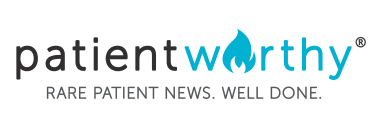The Muscular Dystrophy Association (MDA) recently held its MDA Clinical & Scientific Conference in March 2023. During the conference, stakeholders in the community discussed research trends and clinical practices associated with various forms of muscular dystrophy. For example, shares an article in Healio, one poster presentation at the conference explored data from a Phase 3 clinical study evaluating givinostat for Duchenne muscular dystrophy (DMD).
Parent Project Muscular Dystrophy describes givinostat as:
an ‘HDAC’ inhibitor in that it blocks enzymes called histone deacetylases (HDACs), which are involved in turning genes ‘on’ and ‘off’ within cells and can reduce muscle regeneration in Duchenne. By inhibiting HDAC activity, givinostat may help to activate muscle repair mechanisms to increase muscle fiber regeneration, reduce inflammation, and reduce fibrosis.
Altogether, 179 boys with DMD enrolled in the clinical study. To begin, researchers evaluated how long it took them to climb four stairs, how far they could walk over a six minute period, how long it took to stand from the floor, muscle strength, and fat fraction in the vastus lateralis muscle. Next, the participants received either a placebo or 10mg/mL givinostat 2x daily.
Study findings, after 18 months, showed that givinostat treatment significantly improved the ability to climb stairs. It also improved physical function and mobility. Additionally, givinostat was found to be safe and well-tolerated; while some side effects did occur, researchers and families found them easy to manage.
An Overview: Duchenne Muscular Dystrophy (DMD)
Duchenne muscular dystrophy is one of nine forms of muscular dystrophy. Although it can occur in females (very rarely), DMD predominantly affects males. Caused by DMD mutations, DMD is characterized by a lack of dystrophin (a protein) in the muscles. This causes the characteristic muscle weakness associated with this condition. Symptoms, which often appear before age six, can include:
- Muscle weakness that starts in the pelvis, thighs, and legs but may progress to other areas
- Difficulty walking or climbing
- Learning disabilities
- Enlarged calf muscles
- Scoliosis (abnormal spinal curvature)
- Muscle pain and stiffness
- A waddling gait
- Frequent tripping
- Fatigue
There are no cures for DMD and treatment options typically serve to support those affected. For example, doctors may prescribe nutritional supplements, heart medication, respiratory and ambulatory support, and steroids. Physical and occupational therapy can also help individuals living with this condition.







